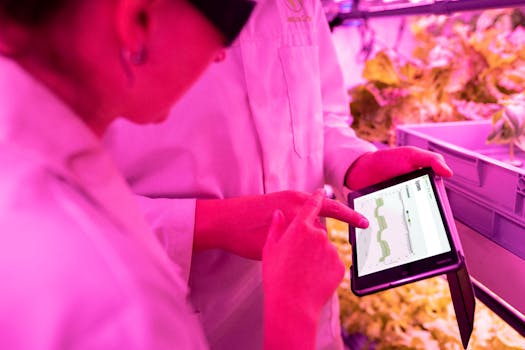Introduction to Agriculture Materials
Agriculture materials play a vital role in enhancing productivity and sustainability within the agricultural sector. These materials include various tools, technologies, and methods designed to improve crop yield and health.
Creating effective agriculture materials requires knowledge of several principles, practices, and innovations. This article outlines essential steps and considerations for developing high-quality agriculture materials.
Whether you are developing biodegradable plant pots or innovative fertilizers, understanding the resources and best practices is crucial for success in agriculture. Here we explore these key elements in detail.
Understanding the Basics of Agriculture Materials
Before creating agriculture materials, it’s essential to grasp the fundamental concepts of agriculture science and technology. A strong foundation helps in selecting the right materials for specific needs.
Consider the various agricultural practices, including organic farming, hydroponics, and permaculture. Each method has unique requirements that affect the choice of materials to develop.
Additionally, resources such as soil types, climate conditions, and crop varieties significantly influence material selection. Recognizing these factors will lead to more effective agriculture solutions.
It’s also helpful to become familiar with the latest advancements in agricultural technology. Innovations often lead to better materials that address modern farming challenges.
Finally, understanding the target market for your agriculture materials is crucial. Tailoring solutions to meet the needs of farmers and agricultural businesses can enhance your chances of success.
Researching Market Needs
Researching market needs involves collecting data on farmers’ challenges and preferences. This process can provide insights into what materials might be most beneficial.
Conduct surveys and interviews with farmers to identify common issues faced in agriculture. Understanding pain points helps create targeted solutions that address real problems.
Investigate existing agriculture products and technologies to find gaps in the market. Look for opportunities where innovations can improve efficiency or yield.
Utilize agricultural extension services, industry reports, and case studies. These resources can offer valuable insights into trends and demands in the agriculture sector.
Overall, comprehensive research lays the groundwork for developing successful agriculture materials suited to the cultivation environment.
Choosing Sustainable Materials
Sustainability is a critical consideration when creating agriculture materials. Eco-friendly options help reduce the environmental impact of agriculture while ensuring long-term viability.
When selecting materials, consider alternatives like biodegradable plastics or organic fertilizers. These materials can minimize pollution and foster healthy soil ecosystems.
Additionally, utilizing local resources can decrease shipping emissions and support regional economies. This approach enhances sustainability in agriculture while fostering community ties.
Moreover, evaluate the lifecycle of materials, from production to disposal. Opt for resources that can be recycled or repurposed, reducing waste in agriculture.
Incorporating sustainability into agriculture materials can differentiate products in a competitive market. It responds to the growing consumer demand for environmentally responsible practices.
Designing Functional Agriculture Materials
Designing agriculture materials should prioritize functionality and usability. Farmers need products that are easy to handle and effective in practice.
Keep in mind the target users when designing materials, ensuring features align with their needs. Collaborating with farmers during the design process can provide valuable feedback.
To enhance functionality, incorporate technology where applicable. Examples include smart sensors in irrigation systems or innovative soil testing kits.
Additionally, consider the structural integrity of materials. Products must withstand environmental stressors such as wind, rain, and UV exposure to ensure durability.
In essence, well-designed agriculture materials can lead to improved user satisfaction and performance in the field.
Employing Technology in Agriculture Materials
Integrating technology into agriculture materials can significantly enhance their effectiveness. Utilizing technological advancements can help meet modern farming challenges.
For instance, precision agriculture employs satellite imagery and data analytics to optimize crop management. These technologies allow farmers to make informed decisions based on real-time data.
Furthermore, automated equipment such as drones can improve monitoring and pesticide application efficiency. Such innovations facilitate timely responses to agricultural needs.
Research and development should focus on emerging technologies. Staying updated on trends can lead to the creation of cutting-edge agriculture materials.
Overall, employing technology in agriculture materials can drive innovation and enhance productivity across agricultural practices.
Testing and Quality Assurance
Testing and quality assurance are critical steps in the development of agriculture materials. Ensuring that products meet industry standards guarantees their effectiveness.
Develop prototypes and conduct field tests to evaluate performance. Gather a variety of feedback from users to identify areas for improvement.
Incorporate laboratory analyses for both raw materials and finished products. Chemical and physical testing can reveal important insights about material reliability and safety.
Additionally, adhere to agricultural regulations and standards set by relevant authorities. Compliance not only builds credibility but also ensures user safety.
A robust testing process establishes trust with consumers and stakeholders, enhancing the appeal of agriculture materials in the market.
Marketing and Distribution Strategies
Effectively marketing and distributing agriculture materials is essential for success in the industry. A well-defined strategy can help reach the target audience efficiently.
Start by creating a compelling brand narrative that communicates the unique benefits of your materials. Storytelling can resonate with farmers, building emotional connections.
Utilize digital marketing channels such as social media and content marketing. These platforms can showcase the advantages of your products and engage potential customers.
Additionally, building partnerships with agricultural cooperatives and local distributors can enhance outreach. Collaborations can expand market access and facilitate trust within the farming community.
Lastly, attending agricultural fairs and trade shows can provide exposure. Direct interactions with the audience can foster relationships and increase product visibility.
Conclusion
Creating agriculture materials requires a comprehensive approach that encompasses research, sustainability, design, technology, testing, and marketing. By following these guidelines, you can develop effective solutions that benefit farmers and agriculture as a whole.
Ultimately, the goal is to provide resources that not only enhance productivity but also promote environmental stewardship. The future of agriculture materials lies in innovation and collaboration.
As you embark on this journey, remain open to feedback and continuous improvement. Adapting to changes in the market and technology will ensure ongoing relevance and success in the field of agriculture.


